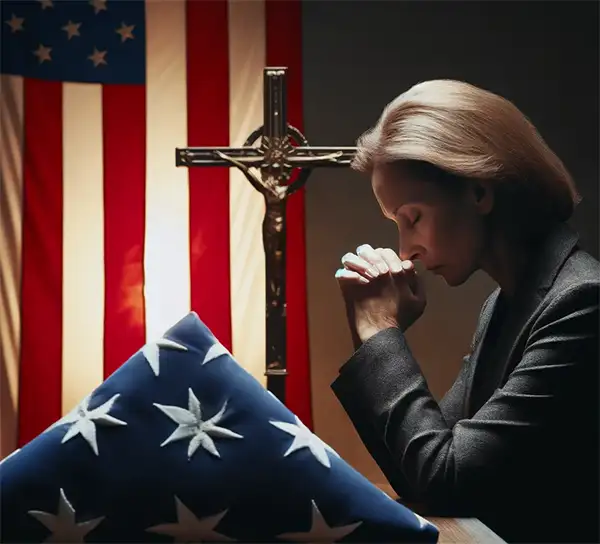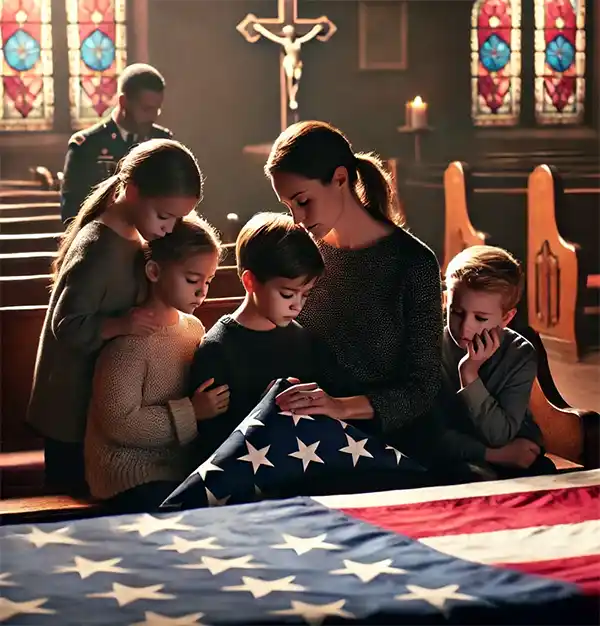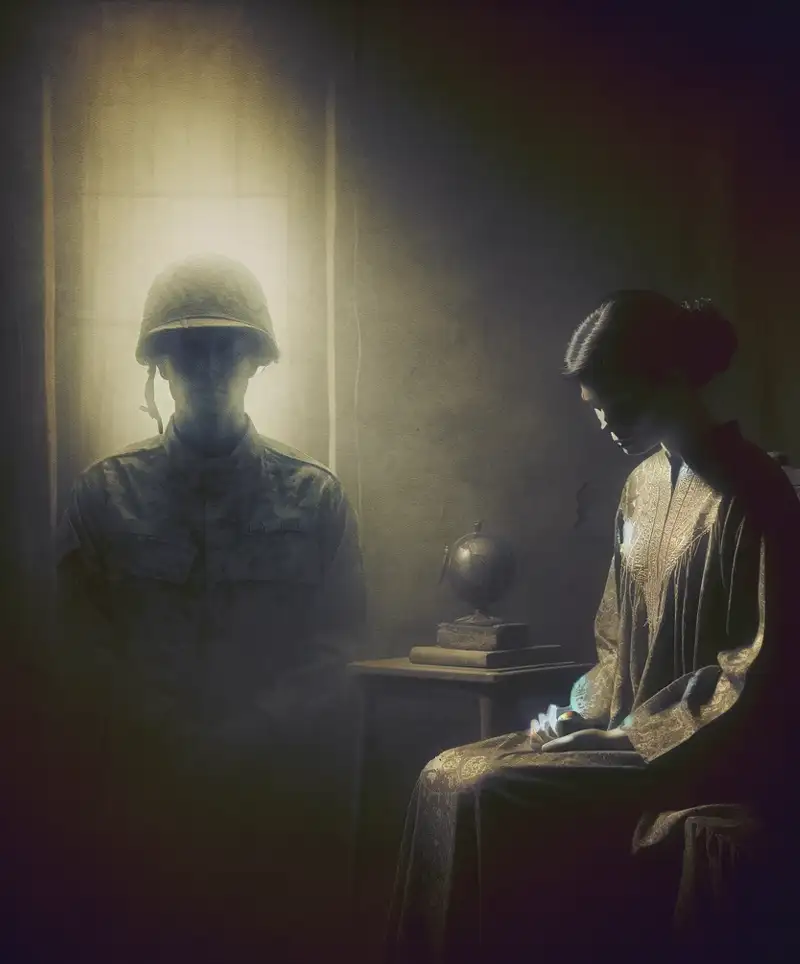 A Tribute to Enduring Sacrifices
A Tribute to Enduring Sacrifices
The tradition of recognizing the profound sacrifices made by families of military personnel, particularly spouses, dates back to World War I. In an era of immense global conflict, American families developed a symbolic method to display their pride and anxieties for loved ones serving in the military. Homes with members in active service adorned their windows with banners bearing a blue star for each family member serving. This visual emblem served as a daily reminder of the risks and responsibilities borne by their loved ones.
The transition from a blue star to a gold star occurred under the most tragic of circumstances: the loss of a military member. The gold star emerged as a symbol of sacrifice, representing a life lost in service to the nation. This emblematic transformation gave rise to terms like Gold Star Mothers, Wives, and Families, acknowledging the unique grief and pride of those left behind.
In the aftermath of World War I, and as conflicts continued globally, the need for a formal recognition of the sacrifices made by military spouses grew. This recognition came to fruition with the establishment of the Gold Star Wives of America in 1945. A poignant encounter among four young widows in New York City sparked a movement that would eventually gain national attention and support from notable figures such as Eleanor Roosevelt. The organization's commitment to providing support, advocacy, and remembrance for the spouses of fallen soldiers laid the groundwork for the formal recognition of their sacrifices.
Gold Star Wives of America
The tradition of recognizing the profound sacrifices made by families of military personnel, particularly spouses, dates back to World War I. In an era of immense global conflict, American families developed a symbolic method to display their pride and anxieties for loved ones serving in the military. Homes with members in active service adorned their windows with banners bearing a blue star for each family member serving. This visual emblem served as a daily reminder of the risks and responsibilities borne by their loved ones.
The transition from a blue star to a gold star occurred under the most tragic of circumstances: the loss of a military member. The gold star emerged as a symbol of sacrifice, representing a life lost in service to the nation. This emblematic transformation gave rise to terms like Gold Star Mothers, Wives, and Families, acknowledging the unique grief and pride of those left behind.
In the aftermath of World War I, and as conflicts continued globally, the need for a formal recognition of the sacrifices made by military spouses grew. This recognition came to fruition with the establishment of the Gold Star Wives of America in 1945. A poignant encounter among four young widows in New York City sparked a movement that would eventually gain national attention and support from notable figures such as Eleanor Roosevelt. The organization's commitment to providing support, advocacy, and remembrance for the spouses of fallen soldiers laid the groundwork for the formal recognition of their sacrifices.
Gold Star Wives of America
The post-World War II era saw the birth of an organization dedicated to the support and advocacy of these grieving spouses. In 1945, a small group of young widows in New York City founded the Gold Star Wives of America. Their collective grief and determination to support one another caught the attention of Eleanor Roosevelt, a widow herself and former First Lady, who lent her support and helped elevate the group's profile.

The organization quickly grew, expanding its reach beyond New York City and establishing chapters across the country. As membership increased, so did its influence. The group worked tirelessly to advocate for survivor benefits, ensuring that spouses of fallen service members received financial support, educational opportunities, and healthcare benefits. Their efforts contributed significantly to legislative changes that improved the quality of life for military widows and widowers.
Gold Star Wives of America also fosters a sense of community among its members. Through annual conventions, local meetings, and support networks, spouses find solace in shared experiences and mutual understanding. The organization provides counseling resources, scholarship programs for the children of fallen service members, and outreach initiatives that help surviving spouses navigate the challenges of loss and rebuilding their lives.
A poignant tradition that began in 1973 involves the presentation of a Gold Star pin to the next-of-kin by a military officer during the funeral services of the deceased, serving as a tangible symbol of their sacrifice. This gesture reinforces the nation’s commitment to honoring and remembering the fallen while recognizing the enduring strength of their families.
From Gold Star Wives Day to Gold Star Spouses Day
Initially recognized officially in 2010 by the United States Senate as Gold Star Wives Day, the observance aimed to honor the widows of fallen servicemen. It was first celebrated in December, closely tied to the anniversaries of several significant military events. However, recognizing the evolving dynamics of military families and the inclusive nature of sacrifice, the observance underwent a significant change. To encompass both wives and husbands of fallen military members, it was renamed Gold Star Spouses Day. Additionally, the date of observance was moved to early April, marking a period of reflection and tribute to the enduring sacrifices of military spouses.
Gold Star Spouses Day is a solemn reminder of the personal costs of military service. It's a day dedicated to acknowledging the resilience, courage, and unwavering support of those who have lost their partners to the service of their country. Through ceremonies, gatherings, and public acknowledgments, this day offers a collective moment to honor the memory of the fallen and support the loved ones they left behind. The evolution of this observance from its origins in World War I to the present day reflects a broader recognition of the shared burden of military service and the importance of community support in healing and remembrance.
How to Celebrate Gold Star Spouses Day
Honoring Gold Star Spouses on their designated day is an opportunity to recognize their sacrifice, show appreciation, and support them in meaningful ways. Observing Gold Star Spouses Day with respect and sincerity ensures that these families feel seen, valued, and remembered. Here are some meaningful ways to honor them:
- Attend or Organize a Commemorative Event – Many communities, military bases, and veterans’ organizations host events to honor Gold Star Spouses. Attending a ceremony or memorial service demonstrates appreciation and solidarity.
- Reach Out to a Gold Star Spouse – A simple act of kindness, such as sending a heartfelt letter, making a phone call, or visiting a Gold Star Spouse, can provide comfort and show that they are not forgotten.
- Donate to Organizations Supporting Gold Star Families – Many non-profit organizations provide financial assistance, mental health support, and community-building programs for Gold Star families. Contributions help sustain these vital services.
- Observe a Moment of Silence – Taking a moment to reflect on the sacrifices of fallen service members and the resilience of their surviving spouses can be a meaningful tribute.
- Share Their Stories – Raising awareness through social media, blogs, or community discussions helps educate others about the significance of Gold Star Spouses and ensures their sacrifices are remembered.
- Volunteer Your Time – Offering time to organizations that assist Gold Star families can make a direct impact. From providing meals to helping with childcare, small gestures can make a difference.
- Fly a Flag in Their Honor – Displaying the American flag or a Gold Star banner is a visible sign of respect and remembrance.
Gold Star Spouses Day is not just a time for reflection but also an opportunity to act in ways that show continued support and gratitude. By engaging in these activities, individuals and communities can help honor the legacy of fallen service members and acknowledge the strength of the spouses they left behind.
Please Share our Content






 A Tribute to Enduring Sacrifices
A Tribute to Enduring Sacrifices









 "Sláinte!" is a traditional Irish expression used as a toast, equivalent to "Cheers!" in English.
"Sláinte!" is a traditional Irish expression used as a toast, equivalent to "Cheers!" in English.